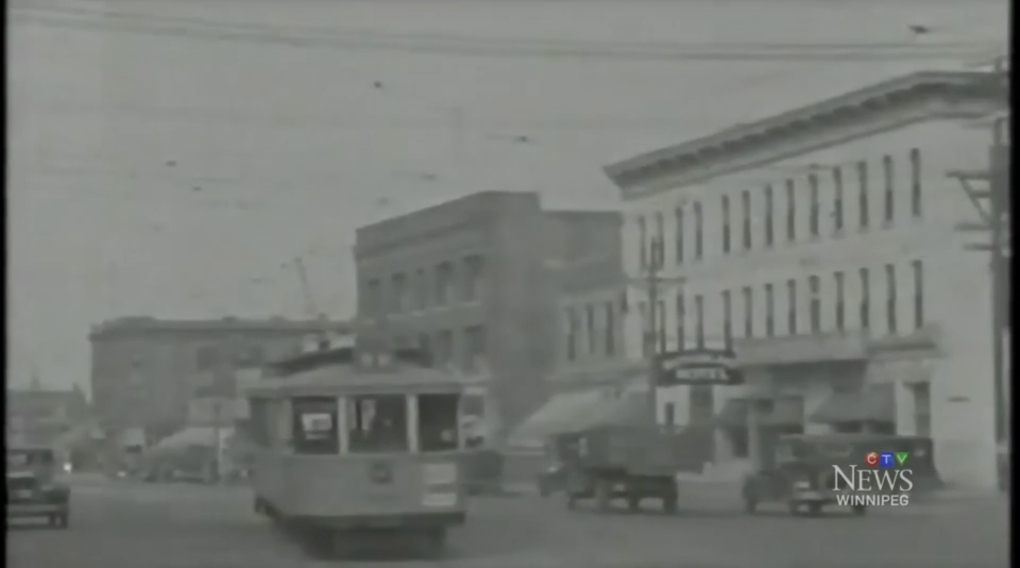It’s pothole season in Winnipeg, but some potholes have gone so deep they’ve uncovered an interesting bit of Winnipeg’s history.
Decades-old rails were revealed by a stretch of potholes on Osborne Street this week.
“What you’re looking at are remnants of the streetcar system that used to serve Winnipeg,” said Fred Headon, a retired educator who has written two books on the railways of Winnipeg and is working on a third volume.
“Rails were set in major roads, and the cars and buses and everything else shared the roads with the streetcars.”
The last of the streetcars ran through Winnipeg on Sept. 19, 1955. The city subsequently pulled up lots of the rails, Headon said, but not all of them. In many cases, he says it was cheaper to leave the rail ties in the ground.

“The quick and easy way was simply to asphalt over top of everything, and when that asphalt wears thin, the rails reappear,” he said.
It is not the first time Winnipeg’s history has popped through the cracks in the concrete. CTV News previously reported the stretch along Osborne Street had exposed old rail tracks back in 2014.
READ MORE: Extreme winter takes toll on roads, exposes old streetcar tracks buried beneath Osborne
Headon said the rails will reappear periodically in Winnipeg; sometimes during construction projects and sometimes during a bad pothole season.
The streetcar has become a historic symbol in Winnipeg – a reminder for many of the 1919 general strike. A permanent art installation at the Pantages Theater Plaza displays the iconic image of a streetcar being tipped over on June 21, 1919 – a day that would become known as Winnipeg’s ‘Bloody Saturday’.
READ MORE: ‘Bloody Saturday’ art installation to keep strike history ‘alive for next 100 years’
Headon said the streetcar system has had a huge impact on Winnipeg’s development as well – acting as a conduit for people to the downtown as the city began to sprawl outwards.
A spokesperson for the city told CTV News when a street is fully reconstructed at the end of its service life, any streetcar rails are removed. But while the rails remain, Headon said Winnipeggers who see them peering through a gaping pothole in the road should be thankful for the role the rails played in the city’s history.
“They should recognize that it’s an element of the city’s history,” he said. “The people should recognize the historical significance of those tracks in developing Winnipeg through its evolution.”